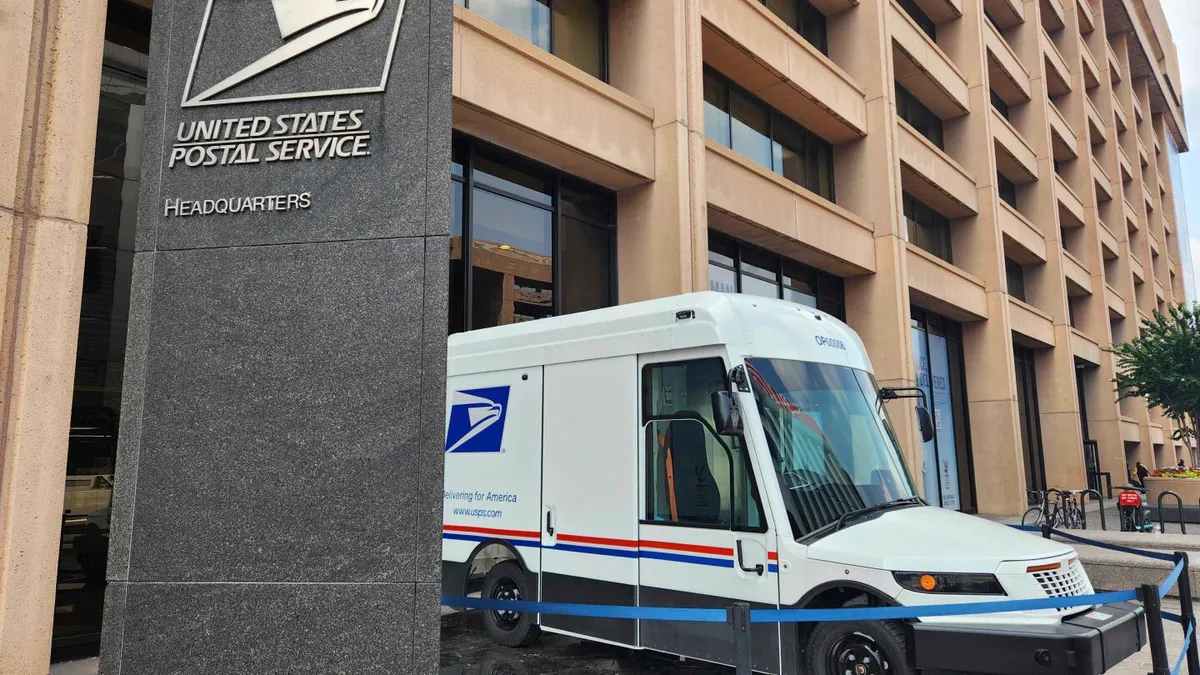
In a significant turn of events, the U.S. Postal Service (USPS) finds itself under scrutiny a year after being praised for its ambitious plan to replace aging, gas-powered mail trucks with a predominantly electric fleet. Currently, congressional actions threaten to strip billions in federal funding designated for this vital electric vehicle (EV) initiative. The implications of these actions could be detrimental not only to the USPS's modernization efforts but also to broader environmental goals.
In June, a Republican proposal aimed at selling off the agency's new electric vehicles and related infrastructure was blocked by the Senate parliamentarian as part of a larger tax-and-spending bill. Despite this setback, attempts to reverse the USPS's transition to an electric fleet continue, framed as a measure for cost savings. Donald Maston, president of the National Rural Letter Carriers’ Association, argues that halting the program at this stage would lead to wasted infrastructure investments and squander millions of taxpayer dollars.
Maston emphasized, “It would be shortsighted for Congress to suddenly pull funding for the EVs or stop the process, as that would waste significant investments already made.” This sentiment is echoed by many in the scientific community, who caution that abandoning the EV initiative could undermine efforts to reduce carbon emissions that contribute to global warming—especially in a time when urgent action is necessary.
A 2022 study conducted by the University of Michigan highlighted that the new electric postal vehicles could potentially reduce total greenhouse gas emissions by up to 20 million tons over their projected 20-year lifespan. Professor Gregory A. Keoleian, co-director of the university’s Center for Sustainable Systems, pointed out that while this figure is a small fraction of the more than 6,000 million metric tons emitted annually in the United States, the transition to electric vehicles is crucial and needs to be expedited.
Keoleian stated, “We’re already falling short of goals for reducing emissions. The actions being proposed could reverse the decarbonization progress made to date.” This highlights the importance of the USPS's EV initiative not only as a modernization effort but also as a critical component in the fight against climate change.
Resistance to the USPS's electric vehicle plan is not limited to budgetary concerns. Many Republican lawmakers share former President Donald Trump’s skepticism regarding the Biden administration's green energy policies. Senator Joni Ernst from Iowa has been vocal in her opposition, arguing that investing heavily in an all-electric postal fleet does not make sense. She plans to pursue legislation to rescind the remaining $3 billion allocated from the Inflation Reduction Act for the USPS's electric vehicle purchases.
Ernst has labeled the EV initiative a “boondoggle,” citing high costs, delays, and concerns regarding performance in cold weather. During a recent Iowa State Fair appearance, she expressed her preference for gas-powered vehicles, suggesting they could incorporate ethanol, which is beneficial for Iowa's agricultural sector.
Despite the political headwinds, the USPS maintains that the production delays of the Next Generation Delivery Vehicles (NGDVs) are manageable and expected. Spokesperson Kim Frum stated, “The production quantity ramp-up was planned to be gradual, allowing time for any issues to be resolved.”
The USPS is currently in the midst of a $40 billion, 10-year modernization plan aimed at stabilizing its finances. This effort received strong backing from President Joe Biden, who has committed to transitioning to an all-electric federal fleet. The “Deliver for America” plan seeks to replace the outdated Grumman Long Life Vehicles, which date back to 1987 and have become notorious for their inefficiency and high maintenance costs.
In 2022, the USPS announced plans to deploy at least 66,000 electric vehicles by 2028, after facing criticism for its slow approach to reducing emissions. The agency has already ordered 51,500 NGDVs, including 35,000 battery-powered vehicles. So far, it has received 300 battery vehicles and 1,000 gas-powered units. Former Postmaster General Louis DeJoy projected that the USPS would primarily purchase zero-emissions vehicles by 2026, although some internal combustion engine vehicles will still be necessary for longer routes.
Frum noted that the planned purchases were made with careful consideration to ensure financial viability, stating they are being deployed to routes where they will save money. The USPS has also received over 8,200 of the 9,250 Ford E-Transit electric vehicles it ordered, marking significant progress in its electrification efforts.
As the political landscape continues to evolve, the future of the USPS's electric vehicle initiative remains uncertain. While some lawmakers push for a return to gas-powered vehicles, experts like Maxwell Woody from the University of Michigan argue that postal vehicles are ideally suited for electrification due to their low average speeds and frequent stops. “It’s the perfect application for an electric vehicle,” Woody concluded, underscoring the potential for EVs to enhance operational efficiency within the USPS.
As the debate continues, the outcome will not only influence the U.S. Postal Service's modernization plans but could also have lasting implications for environmental sustainability efforts across the country.